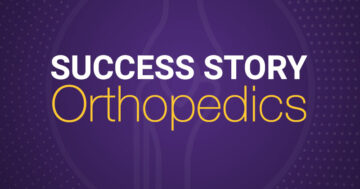What Is MIPS in Ophthalmology and How Can You Make the Most of Value-Based Care?

Review MIPS measures for ophthalmology and see how EHRs can help with the MIPS process
New to MIPS and wondering where to start? Let’s begin by going back to where it all started — with the Medicare Access and CHIP Reauthorization Act of 2015, known as MACRA, which ushered in the Quality Payment Program (QPP).
The QPP was created to promote quality care and value in healthcare, two things patients and ophthalmologists both want.
At the moment, there are two ways to participate in the QPP — through the Merit-Based Incentive Payment System (MIPS) or Alternative Payment Models. Since many ophthalmology practices participate in MIPS, this blog will focus on MIPS reporting requirements.
MIPS Eligibility
Did you know that you may be able to participate in MIPS and report on your ophthalmology MIPS measures individually, as part of a group, or both?
Your eligibility status is determined by a number of factors, such as:
- Clinician type
- Date of Medicare enrollment
- The amount of covered professional services you provide to Medicare patients
Want to know if you’re eligible? Grab your 10-digit National Provider Identifier (NPI) number and check your status at the CMS website.
MIPS Value Pathways (MVPs)
Beginning with the 2023 performance year, CMS has implemented a new framework for participating in MIPS called MIPS Value Pathways, or MVPs. MVPs are designed to alleviate reporting burdens by reducing complexity.
One of the key features of MVPs is that they are specialty-specific.
Currently, there are no MVPs that apply to ophthalmologists, although that may change for 2024 or 2025. The framework is intended to become mandatory starting in 2028.
Interested in participating? You can register in advance here.
MIPS Measures for Ophthalmology
MIPS is measured by category: quality, promoting interoperability, improvement and cost. These categories count toward your final MIPS score. Each one has different weights, relative to the other, as well as different measures and requirements.
Below is a quick overview of these categories.
Quality — 30% of Final Score
- This category measures healthcare processes, outcomes and the patient experience.
- To report this category, you’ll need to submit data for at least six quality measures, including one outcome measure (if you don’t have an outcome measure to report, a high-priority measure will suffice) OR a complete specialty measure set.
- There are many ophthalmology quality measures under which you can submit.
- You’ll also need to submit data for at least 70% of your patients who qualify for each measure.
- Don’t worry: You can submit measures from different collection types to reach a minimum of six quality measures.
Promoting Interoperability — 25% of Final Score
- For the 2023 performance year, you’re required to use an EHR system that meets the 2015 Edition Cures Update certification criteria.
- You’ll need to submit data for certain measures from each of the four objective measures for the same 90 continuous days (or more) during 2023.
- Can’t fulfill the requirements in this category? You may be eligible to submit a MIPS Promoting Interoperability Performance Category Hardship Exception Application.
- Remember: The Query of Prescription Drug Monitoring (PDMP) measure is worth 10 bonus points.
Improvement Activities — 15% of Final Score
- You must perform between one and four improvement activities depending on your reporting requirements.
- To earn full credit in this performance category, you must generally submit one of the following combinations of activities:
- Two high-weighted activities
- One high-weighted activity and two medium-weighted activities
- Four medium-weighted activities
- Improvement activities have a 90-day continuous performance period during the 2023 performance year unless otherwise stated, but not all activities have to be performed during the same 90 days.
- Do you hold a special qualifying status? You’ll receive double points for each high- or medium-weighted activity you submit.
What are medium- and high-weighted improvement activities?
CMS defines high-weighted activities as those that closely align with public health priorities. Medium-weighted activities, while important, are not as closely aligned with public health priorities in CMS’s eyes and are weighted half as much as high-weighted activities (10 points instead of 20).
What is a qualifying special status?
This is “an automatically applied determination by CMS that qualifies clinicians, practices or virtual groups for reduced reporting requirements in certain performance categories,” according to CMS. You can learn more about special statuses here.
Cost Activities — 30% of Final Score
- Cost is an important part of MIPS because it measures Medicare payments made for care provided to patients.
- There are 25 cost measures for the 2023 performance period, including episode-based and population-based cost measures.
- You don’t need to submit any data for this category because CMS uses Medicare Part A and B claims data to calculate your score for you.
MIPS Performance Thresholds and Payment Adjustments
In traditional MIPS for ophthalmology, CMS sets performance thresholds.
For the 2023 performance year, adjustments are up to 9%, positive or negative, on all Medicare-submitted claims. You need to have a final MIPS score of 75 points or more to avoid a negative payment adjustment or penalty.
If a bonus or penalty (a positive or negative payment adjustment) is received, it is applied to future Medicare reimbursements two calendar years later. For example, any payment adjustment received during the 2023 performance year, will be applied to Medicare reimbursements beginning on January 1, 2025.
Exceptional performance bonuses have been eliminated.
How EHRs Make MIPS Reporting Easier for Ophthalmologists
EHRs, like our ophthalmology-specific EHR, EMAⓇ, make MIPS data collection and reporting less of a manual process, helping to take the burden off your clinical and administrative staff.
Here is a selection of MIPS-related EHR features that may be able to help you with reporting:
MIPS Dashboard
Want to see how you’re tracking toward your MIPS goals? Check your dashboard, which shows how you’re performing in many MIPS categories.
Automated Ophthalmology MIPS Measure Collection
As clinicians enter information into your EHR, your EHR is automatically collecting the measures you need to report to CMS.
Ophthalmology-Specific Quality Measures
Our EHR, EMA, gives you the ability to report most of your specialty-specific quality measures, including the following:
- Age-related macular degeneration (AMD)
- Dilated macular examination
- Documentation of patient education about AMD
- Cataracts
- Difference between planned and final refraction
- Receipt of preoperative assessment by cataract surgeon
- Diabetic Retinopathy
- Communication with the physician managing ongoing diabetes care
- Documentation of a plan of care
- Glaucoma
- Assessment of visual field
- Documentation of a plan of care
- Intraocular pressure (IOP) control
- Ocular ischemic syndrome
- Documentation of a plan of care
Clinical Data Registries
EMA has its own specialized registries for the following:
- Dry eye
- Primary open angle glaucoma
EMA also supports reporting to the IRISⓇ registry.
Getting on Track With MIPS
If you are an ophthalmologist, it is important to understand the MIPS program and how it can impact your practice.
MIPS may be complex, but our ophthalmology-specific EHR can make it easier to collect and report data. If you’d like to see it for yourself, book a demo.
This blog is intended for informational purposes only and does not constitute legal or medical advice. Please consult with your legal counsel and other qualified advisors to ensure compliance with applicable laws, regulations and standards.


